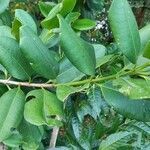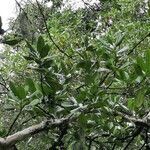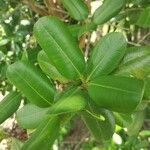An evergreen tree. It grows 13 m tall. The bark is brownish. The leaves are leathery and oblong. They are 8-10 cm long and 1-6 cm wide. There are 10-20 pairs of secondary veins. The flowers are small and white. They occur as 15-100 in a group. The tree has an aroma. The fruit are round and 5-15 mm wide. There are 1-4 seeds.



